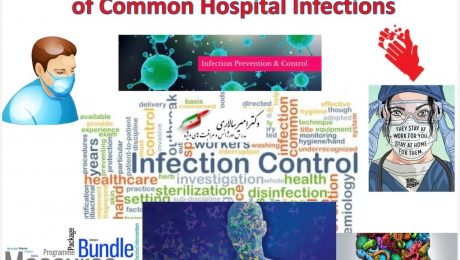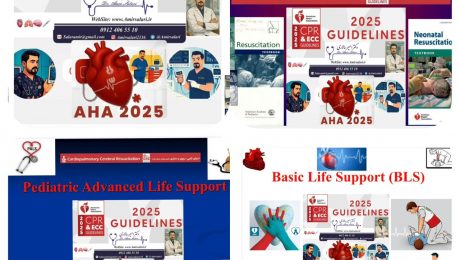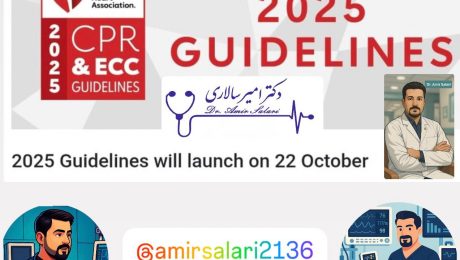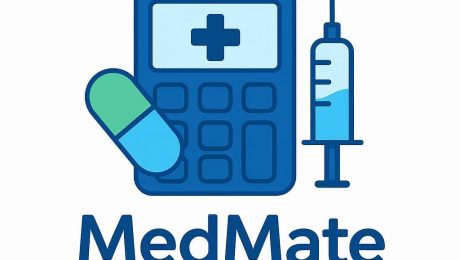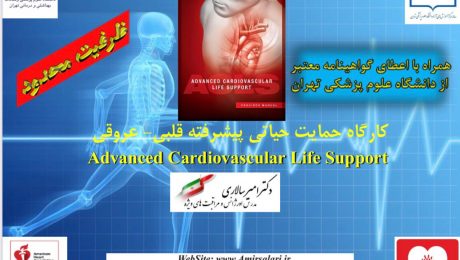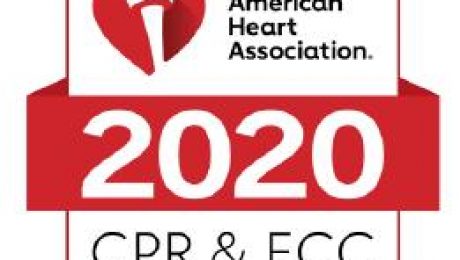مراقبت های بسته ای برای پیشگیری از عفونت های شایع بیمارستانی بر اساس آخرین شواهد علمی
Care Bundles for the Prevention of Common Hospital Infections Based on the Latest Scientific Evidence
در این قسمت شما می توانید مطالب و فیلم های آموزشی در مورد مراقبت های بسته ای برای پیشگیری از عفونت های شایع بیمارستانی شامل: VAP,CAUTI,CLABSI,SSI را بر اساس آخرین شواهد و دستورالعمل های معتبر علمی مشاهده و دانلود فرمایید. این بسته های مراقبتی جهت استفاده در بخش های ویژه و سایر بخش های دیگر بیمارستان طراحی و تدوین شده است.
باندل های مراقبتی برای پیشگیری از CAUTI
- Published in Hospital Accreditation, Infection Prevention and Control, Prehospital Emergency Care, اخبار, اعتباربخشی بیمارستان, پیشگیری و کنترل عفونت, مقالات
بسته های جامع آموزشیBLS,ACLS,PALS,NRP گایدلاین سال ۲۰۲۵
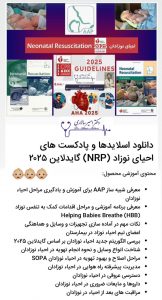
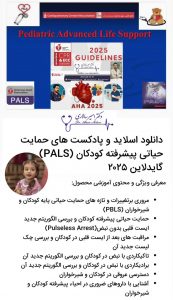


نجات جان انسان ها و داشتن احیای موفق واقعی لذت بخش ترین تجربه بالینی من است.
نظر شما چیست؟
اهمیت به روز بودن دانش و مهارت احیای قلبی-ریوی برای کلیه همکاران یک ضرورت اساسی و مهم است.
شما عزیزان می توانید نسخه الکترونیک و غیر قابل چاپ کلیه پوسترها و بسته های جامع آموزشیBLS,ACLS,PALS,NRP سال ۲۰۲۵ را از طریق لینک زیر یا مراجعه به صفحه مربوط به فروشگاه محصولات آموزشی دانلود فرمایید.
https://amirsalari.ir/product-category/educationalproductsdownload/
دکتر امیر سالاری
مدرس اورژانس و مراقبت های ویژه
دانشگاه علوم پزشکی تهران
مجتمع بیمارستانی امام خمینی
بیمارستان مهدی کلینیک
تغییرات و تأکیدات کلیدی مورد انتظار در گایدلاین CPR سال ۲۰۲۵
دستورالعملهای (گایدلاینهای) احیای قلبی ریوی (CPR) هر پنج سال یکبار توسط سازمانهایی مانند انجمن قلب آمریکا (AHA) و شورای احیای اروپا (ERC) بهروزرسانی میشوند.
دستورالعملهای کامل AHA و ERC برای سال ۲۰۲۵ در تاریخ ۲۲ اکتبر ۲۰۲۵ منتشر میشوند. با این حال، بر اساس خلاصههای پیش از انتشار و مقالات تخصصی، تغییرات و تأکیدات کلیدی مورد انتظار در گایدلاینهای CPR سال ۲۰۲۵ شامل موارد زیر است:
تأکیدات کلیدی مورد انتظار:
* بهبود کیفیت ماساژ قفسه سینه:
* عمق و نرخ فشردهسازی: تأکید قوی بر حفظ عمق و نرخ استاندارد (۱۰۰ تا ۱۲۰ بار در دقیقه و عمق حدود ۲ تا ۲.۴ اینچ یا ۵ تا ۶ سانتیمتر برای بزرگسالان) و به حداقل رساندن وقفهها.
* استفاده از بازخورد در زمان واقعی (Real-Time Feedback): توصیه قویتر به استفاده از دستگاهها و فناوریهایی که بازخورد فوری در مورد عمق و نرخ ماساژ ارائه میدهند برای اطمینان از کیفیت بالا.
* احیای قلبی ریوی کودکان و نوزادان:
* تغییر در تکنیک نوزادان: احتمالاً تأکید بیشتری بر استفاده از تکنیک دو انگشتی (به جای دو شست احاطه کننده) برای یک احیاگر انفرادی و افزایش تمرکز بر تنفسهای نجاتبخش اولیه در شرایط ایست قلبی غیرقلبی (مانند خفگی یا غرقشدگی).
* عمق فشردهسازی برای کودکان: احتمالاً دستورالعملهای دقیقتری برای عمق فشردهسازی (به عنوان مثال، حدود یک سوم قطر سینه) برای کاهش خطر آسیب در عین حفظ اثربخشی.
* استفاده از AED: تشویق به استفاده زودهنگامتر از دفیبریلاتور خودکار خارجی (AED) برای نوزادان زیر ۱ سال در صورت موجود بودن تنظیمات مخصوص اطفال.
* تأکید بر دفیبریلاسیون سریع (استفاده از AED):
* افزایش دسترسی عمومی: تأکید بیشتر بر نقش اپراتورهای اورژانس (دیسپچرها) برای راهنمایی تماسگیرنده جهت پیدا کردن و آوردن AED در کنار راهنمایی CPR تلفنی (Dispatcher-assisted AED retrieval).
* تکنیکهای پیشرفته (ALS):
* دفیبریلاسیون مقاوم به شوک: برای ایست قلبی مقاوم به شوک اولیه، روشهای پیشرفتهتری مانند Double-sequential external defibrillation (DSED) (دو شوک تقریباً همزمان با دو دستگاه) و Vector change defibrillation (تغییر محل پدهای دفیبریلاتور) مطرح شدهاند.
* تنفس مصنوعی برای عموم: در بزرگسالان، همچنان CPR فقط با دست (Hands-Only CPR) برای افراد آموزش ندیده توصیه میشود، اما تأکید میشود که در موارد خاص مانند غرقشدگی یا سوءمصرف مواد افیونی و برای کودکان، تنفس مصنوعی (به شرط آموزش) اهمیت دارد.
* مراقبتهای پس از احیا و تیممحوری:
* توجه بیشتر به مراقبتهای پس از احیا و آمادگی روانی و مرور عملکرد (Debriefing) پس از یک رویداد احیا برای بهبود کار گروهی.
توجه: برای کسب اطلاعات دقیق و رسمی، باید منتظر انتشار کامل و ترجمه شده دستورالعملهای رسمی AHA و ILCOR/ERC در تاریخ اعلام شده باشید.
معرفی و نحوه استفاده بالینی از اپلیکیشن تحت وب، جامع و کابردی محاسبات دارویی MedMate
با سلام و احترام خدمت همه همکاران؛ در این بخش از سایت ضمن معرفی و نحوه استفاده بالینی از اپلیکیشن تحت وب، جامع و کابردی محاسبات دارویی MedMate ، می توانید آن را نصب و ویدئوی آموزشی مربوط به نحوه استفاده بالینی را طریق لینک کانال آپارات مشاهده فرمایید.
لازم به ذکر است که این اپلیکیشن توسط پرستار عزیز شاغل در بخش جنرال سه بیمارستان حضرت مهدی عج جناب آقای توکل پیری و تحت نظارت علمی و بالینی اینجانب برنامه نویسی و طراحی شده است. محتوی علمی و فرمول های این برنامه کاربردی بر حسب ضرورت و به منظور استفاده آسان تر در بالین و بهینه سازی محیط کاربری آن به طور مداوم بازبینی و به روز رسانی می گردد.
در حال حاضر همکاران محترم می توانند از طریق لینک زیر در کامپیوتر و یا تلفن همراه خود برای محاسبات دارویی و محاسبه میزان انفوزیون مایعات و سایر محاسبات کاربردی دارویی از آن استفاده فرمایند.
خواهشمندم ضمن معرفی این اپلیکیشن به کلیه همکاران پزشک، پرستار، کارشناسان بیهوشی و فوریت های پزشکی در سراسر کشور، نظرات و پیشنهادات سازنده خود را در راستای ارتقای این اپلیکیشن ارائه فرمایید.
با تشکر
دکتر امیر سالاری
دانشگاه علوم پزشکی تهران
لینک ورود به اپلیکیشن محاسبات دارویی: https://Drug-c.vercel.app

لینک ویدئوی آموزشی معرفی و نحوه استفاده بالینی از اپلیکیشن تحت وب، جامع و کابردی محاسبات دارویی MedMate :
كارگاه تخصصي آمادگي و پاسخ به حوادث شيميايي، زيستي، پرتوي، هسته اي و انفجاري(CBRNE)
اين دوره تخصصي با هدف ارتقاء آمادگي و انجام پاسخ مؤثر به حوادث CBRNE برگزار مي گردد.
براي برگزاري كارگاه تخصصي آمادگي و پاسخ به حوادث شيميايي، زيستي، پرتوي، هسته اي و انفجاري در دانشگاه يا بيمارستان خود به شماره ۰۹۱۲۴۰۶۵۵۱۰ در پيام رسان واتساپ پيام ارسال فرمایید.
#پدافند_غیر_عامل #پدافند_زیستی #پدافند_شیمیایی #پدافند_پرتوی #بهداشت_درمان #قرارگاه_پدافند #آلودگي_زدايي #تجهيزات_حفاظت_فردي #حوادث_و_بلایا #سلامت_در_حوادث_و_بلایا #سلامت_در_بلایا_و_فوریتها #متخصص_سلامت_در_بلایا_و_فوریتها #دكتر_امير_سالاري
#cbrne #cbrnetraining #hazmat #hazmattraining #decontamination #ppe #weaponofmassdestruction #disasterpreparedness #dr_amir_salari
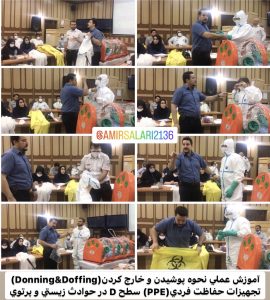
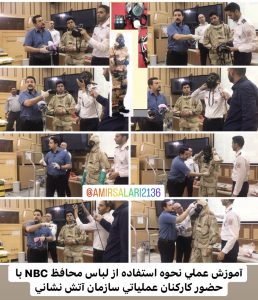
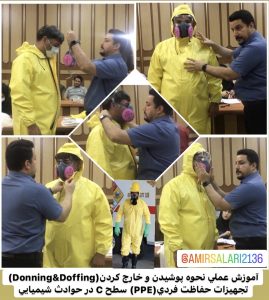

کارگاه احیای قلبی- ریوی (CPR) و حمایت حیاتی پیشرفته قلبی- عروقی (ACLS) با اعطای مدرک معتبر از دانشگاه علوم پزشکی تهران
قابل توجه کلیه همکاران بالینی شامل: پزشکان متخصص، پزشکان عمومی، پرستاران، تکنسین های فوریت های پزشکی و سایر همکاران علاقه مند
عزیزانی که تمایل دارند در کارگاه های حضوری و عملی احیای قلبی- ریوی (CPR) و دوره های مختلف حمایت حیاتی شامل BLS,ACLS,ATLS,PHTLS و مدیریت راه هوایی(Airway Management) شرکت کرده و مدرک معتبر از دانشگاه علوم پزشکی تهران را دریافت نمایند، می توانند به صورت گروهی با حد نصاب حداقل ۸ نفر با سایر همکاران علاقه مند خود برنامه ریزی کنند و درخواست شرکت در کارگاه های مورد علاقه خود را به شماره ۰۹۱۲۴۰۶۵۵۱۰ در پیام رسان واتساپ ارسال فرمایند تا بعد از انجام هماهنگی و ثبت نام با حضور در مرکز مهارت های بالینی در شهر تهران در این کارگاه ها شرکت فرمایند.
در ضمن امکان برگزاری این کارگاه ها در محل دانشگاه، بیمارستان ها و مراکز فوریت های پزشکی در سراسر کشور نیز با هماهنگی قبلی وجود دارد.
لازم به ذکر است که کارگاه آموزشی حمایت حیاتی پیشرفته قلبی- عروقی (ACLS) بر اساس آخرین گایدلاین سال ۲۰۲۰ انجمن قلب آمریکا (AHA 2020 CPR&ECC Guidelines) به صورت مگاکد و شبیه سازی بالینی و با تأکید بر مهارت های ضروری در حین عملیات احیای قلبی- ریوی اجرا می گردد.
در این کارگاه مهارت های عملی احیاء شامل فشردن قفسه سینه با کیفیت بالا ، باز کردن راه هوایی با مانورهای پایه، قرار دادن انواع ایروی، تهویه تنفسی با استفاده از BVM، لوله گذاری داخل تراشه و گذاشتن LMA، نحوه برخورد با ایست قلبی و مرور الگوریتم های pulseless arrest، تاکیکاردی و برادیکاری با نبض علامت دار، شناسایی دیس ریتمی های شایع، کار با دستگاه الکتروشوک وانجام کاردیوورژن و دفیبریلاسیون، تجویز داروهای ضروری در حین احیاء، مدیریت فرایند احیاء به صورت شبیه سازی بالینی و انجام مگاکد با استفاده مانکن پیشرفته و شبیه ساز بالینی PDA STAT به صورت عملی به فراگیران آموزش داده می شود.
اینفوگرافی های تغییرات گایدلاین احیاء قلبی-ریوی ۲۰۲۰ (AHA 2020 CPR&ECC Guidelines)
در این قسمت شما می توانید ضمن دانلود فایل نکات برجسته و تغییرات گایدلاین احیاء قلبی-ریوی سال ۲۰۲۰ انجمن قبل آمریکا و کمیته بین المللی احیاء (AHA 2020 CPR&ECC Guidelines) به فایل اینفوگرافی های این تغییرات نیز که توسط بنیاد قلب و استروک کانادا و انجمن قبل آمریکا تهیه شده است دسترسی داشته باشید و آنها را بدون محدودیت دانلود فرمایید.
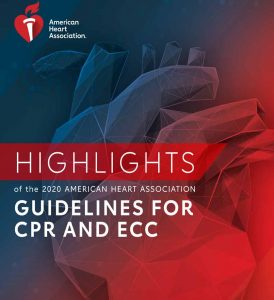
Pediatric Basic and Life Support
دانلود محصولات آموزشی (اسلاید، پوستر، کتاب، پادکست، فیلم)
به اطلاع کلیه همکاران و علاقه مندان عزیز می رسانم که جهت خریداری و دانلود محصولات آموزشی (اسلاید، پوستر، کتاب، پادکست، فیلم) و دریافت مطالب وبینارهای آموزشی برگزار شده به صورت آفلاین می توانید از طریق لینک زیر و یا قسمت مربوط به این قسمت در سایت اقدام فرمایید.
https://www.amirsalari.ir/product-category/educationalproductsdownload/
- Published in Cardiopulmonary Resuscitation, Disasters and Emergencies Health, First Aid, Hospital Accreditation, Hospital Emergency Care, Infection Prevention and Control, Intensive and Critical Care, Prehospital Emergency Care, احیای قلبی- ریوی, اخبار, اعتباربخشی بیمارستان, اورژانس, اورژانس بیمارستانی, اورژانس پیش بیمارستانی, پیشگیری و کنترل عفونت, دستهبندی نشده, سلامت در حوادث و بلایا, کمک های اولیه, مراقبت های ویژه, مقالات
Coronavirus disease (Covid-19)
Respecting the recently pandemic COVID-19 outbreak, I decided to inform all health care providers and researchers about the latest articles and other resources on the Coronavirus disease (Covid-19) including clinical reports, management guidelines, and commentary which are accessible through the following useful links.
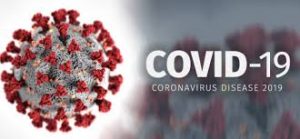
https://www.nejm.org/coronavirus?query=RP
https://www.thelancet.com/coronavirus?dgcid=kr_pop-up_tlcoronavirus20
https://jamanetwork.com/journals/jama/pages/coronavirus-alert
https://www.bmj.com/coronavirus
https://www.uptodate.com/contents/coronavirus-disease-2019-covid-19
https://www.cdc.gov/coronavirus/2019-ncov/index.html
https://www.ecdc.europa.eu/en/coronavirus
https://www.who.int/emergencies/diseases/novel-coronavirus-2019
https://apic.org/news/2019-novel-coronavirus-2019-ncov-resources
https://www.idsociety.org/public-health/COVID-19-Resource-Center/
https://www.aorn.org/about-aorn/aorn-newsroom/covid-19-coronavirus
https://www.aha.org/2020-01-22-updates-and-resources-novel-coronavirus-2019-cov
https://kowsarpub.com/articles/102652.html
https://www.amirsalari.ir/1398/12/19/covid-19/
The World Restart a Heart (WRAH) Day
“All citizens of the world can save a life”. With these words, the International Liaison Committee on Resuscitation (ILCOR) is launching the first global initiative – World Restart a Heart (WRAH) – to increase public awareness and therefore the rates of bystander cardiopulmonary resuscitation (CPR) for victims of cardiac arrest. In most of the cases, it takes too long for the emergency services to arrive on scene after the victim’s collapse. Thus, the most effective way to increase survival and favorable outcome in cardiac arrest by two- to fourfold is early CPR by lay bystanders and by “first responders”. Lay bystander resuscitation rates, however, differ significantlyacross the world, ranging from 5 to 80%. If all countries could have high lay bystander resuscitation rates, this would help to save hundreds of thousands of lives every year. In order to achieve this goal, all seven ILCOR councils have agreed to participate in WRAH 2018. Besides schoolchildren education in CPR (“KIDS SAVE LIVES”), many other initiatives have already been developed in different parts of the world. ILCOR is keen for the WRAH initiative to be as inclusive as possible, and that it should happen every year on 16 October or as close to that day as possible. Besides recommending CPR training for children and adults, it is hoped that a unified global message will enable our policy makers to take action to address the inequalities in patient survival around the world.
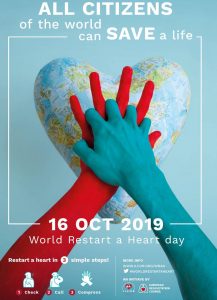
- 1
- 2

